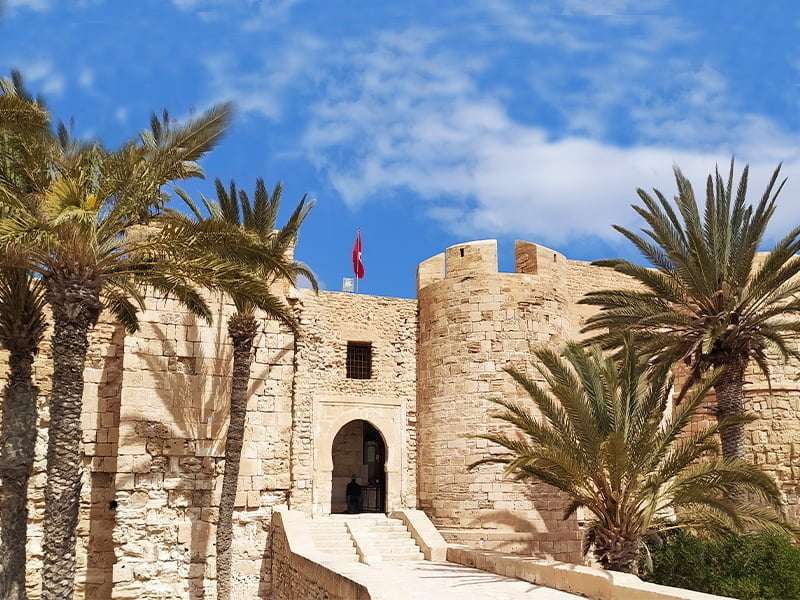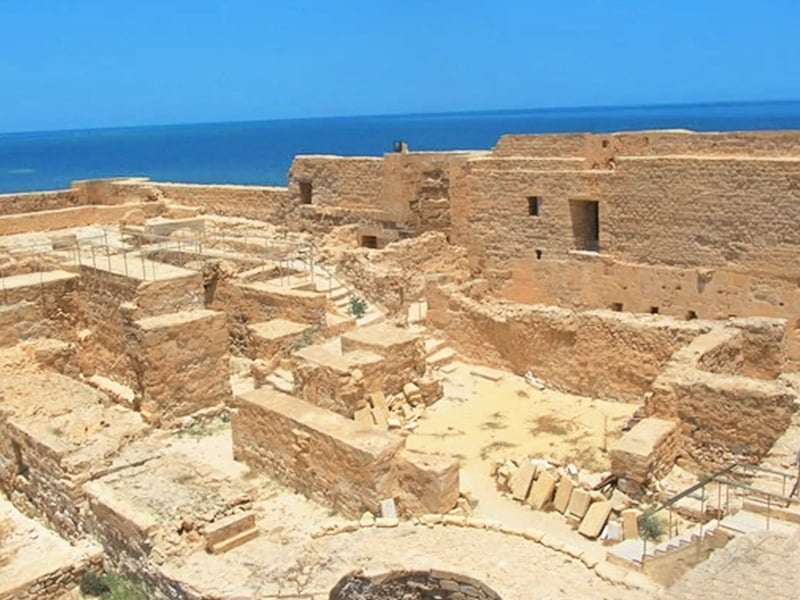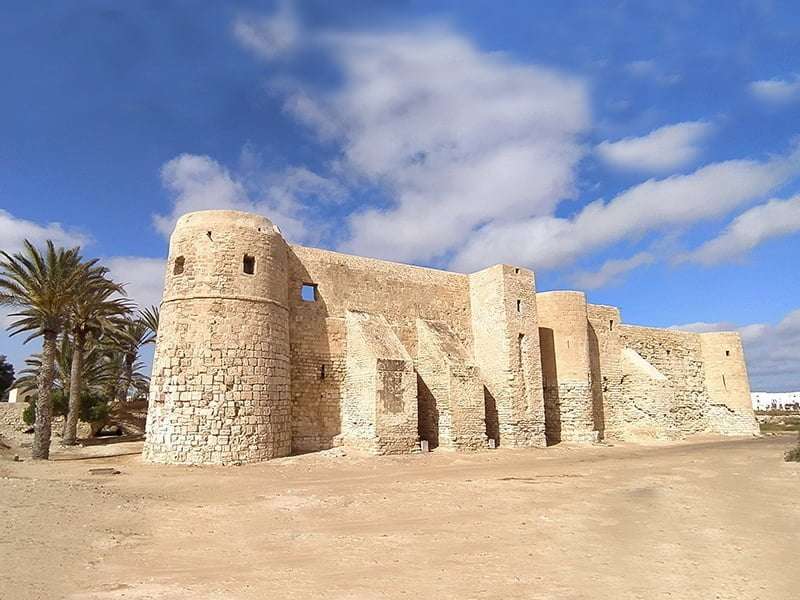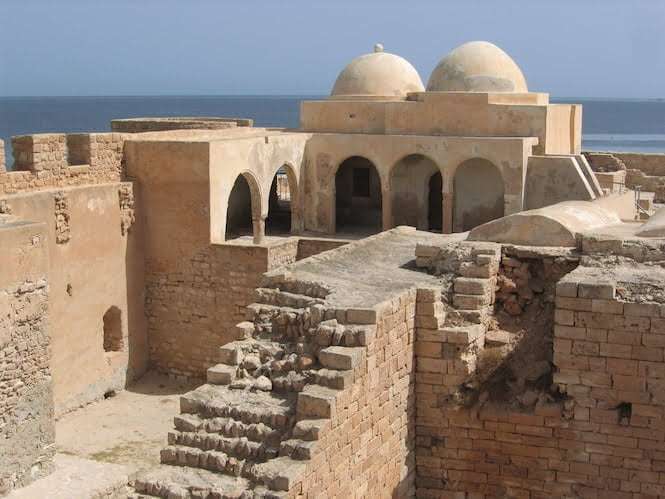Fort Ghazi Mustapha is located in Houmt Souk, near the main port of the island of Djerba. This monument, 68 meters long and 53 meters wide, was built during the Hafsid era under the aegis of Abu Farès Abdelaziz in 1425.
Its curtain walls, surrounded by a moat, are traversed by protrusions and rectangular and round towers. Access to this fort is through a door with two large leaves surmounted by a semicircular arch. You then cross a chicane corridor to find yourself inside a large courtyard occupied by the remains of walls, vaulted rooms and the remains of another fort 40 meters long by 40 meters wide. The latter, by its shape and architecture, being equipped with round reservoir towers on one side and other octagonal ones on the other, is reminiscent of the Aghlabid ribats. It was at the same time that the ditch surrounding the monument was dug, which allowed galleys and galleons to maneuver easily to monitor the north coast.
Fort Ghazi Mustapha was the scene of several battles, the last being the one between the Turks and the Spaniards and which ended in the latter's decisive defeat.
In 1567, the governor of the island, named Ghazi Mustapha, who was administratively dependent on the province (vilayit) of Tripoli, began a series of repair and restoration works to allow the Ottoman garrison to take up residence there.
Among the most important alterations that affected this monument, it is important to point out the development of an access door surmounted by machicolations and fortified by a watchtower thus replacing the drawbridge.
This fort was also equipped with platforms to receive the cannons and its outer walls were consolidated by retaining walls.
At the same time dates back the construction of the famous tower of skulls. It is a "monument" intended to celebrate and immortalize the last victory of the Turks over the Spaniards in 1560. On the orders of Ahmed Bey, this tower was dismantled and replaced by a commemorative stele in cut stone.
This fort continued to be used as a base to guard against the dangers coming from the sea and especially from the formidable pirates of Saint-Jean de Malte and Saint-Etienne. It is in this context that the inhabitants of Djerba began to fortify the mosques and build guard posts on the coast.
It was not until 1915 that Fort Ghazi Mustapha was evacuated of the French soldiers who had occupied it since 1881 and classified as a historical monument by a beylical decree dated March 3 of the same year.
Following the first restoration work started in 1969 by the National Institute of Art and Archaeology, the monument was opened to the public for the first time in the early 1980s.
Borj Ghazi Mustapha now houses the local headquarters of the National Heritage Institute, in charge of both archaeological research and restoration and enhancement of the region's heritage.




 >
>
 Read More Reviews
Read More Reviews
Kevin Costello
3 weeks agoThis fortress is not big but very interesting and left me with many questions. There were many archeologists actively working on projects inside but little information otherwise. I really enjoyed the views from the battlements and wandering around this historic building. 8 dinar entrance is very reasonable.
Rawen Abbassi
3 months agoAmazing piece of history. The fortress was initially built by the Romans, and later restored by the Ottomans! I wasn’t lucky enough to get inside, however I had a nice night walk around it to admire its architectural masterpiece
Labadi Mongi
a month agoBorj Ghazi Mustapha, also known as Borj El Kebir, is a historic fortress in Houmt Souk, Djerba. Built in the 15th century and reinforced by the Ottomans, it defended the island against numerous invasions and remains a powerful symbol of Djerba’s resilience and strategic importance in the Mediterranean.
Ahm'd Dinar
6 months agoA little to nothing to see. For a 5D ticket, don't expect much. Suggest a link between the fortress and the museum.
Mohamed Tailamun
3 months agoEntry for Maghreb region is 5 TND,Eurpians pay 8 as of Jul/2025, place is small no access to the catacombs or the water reservoir or the tunnels between the fortress,part of the sea view vantage point is closed as will,has decent toilets. I noticed also fake carbonate based tablets with the goddess Tanet and Indian numbering on them on them,someone must have added them for suspense i guess but its sad to see them among genuine archeological site.